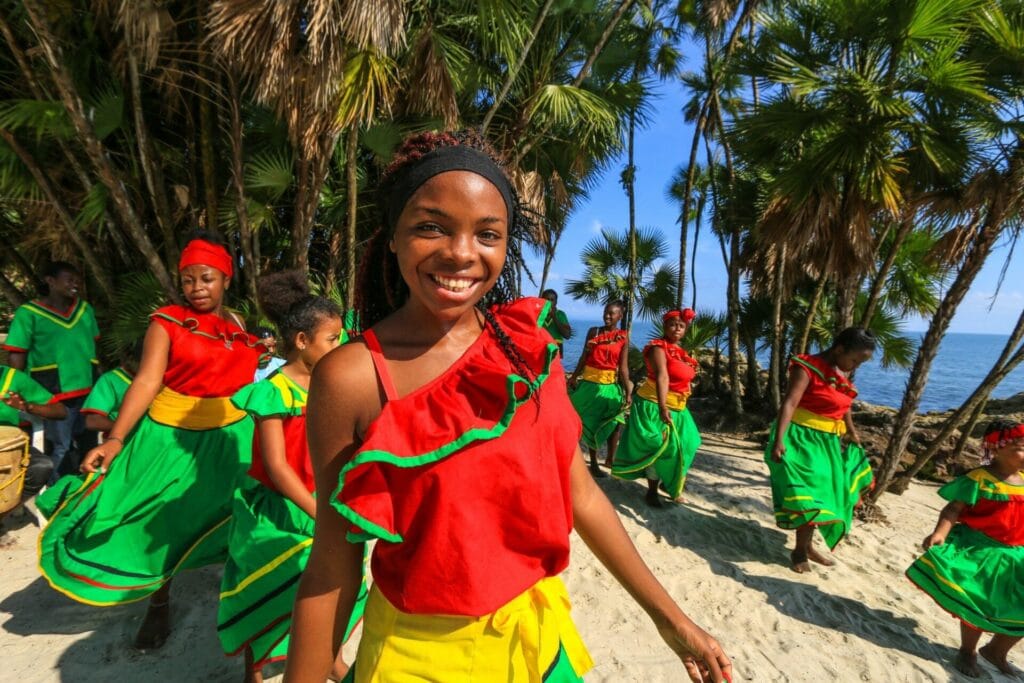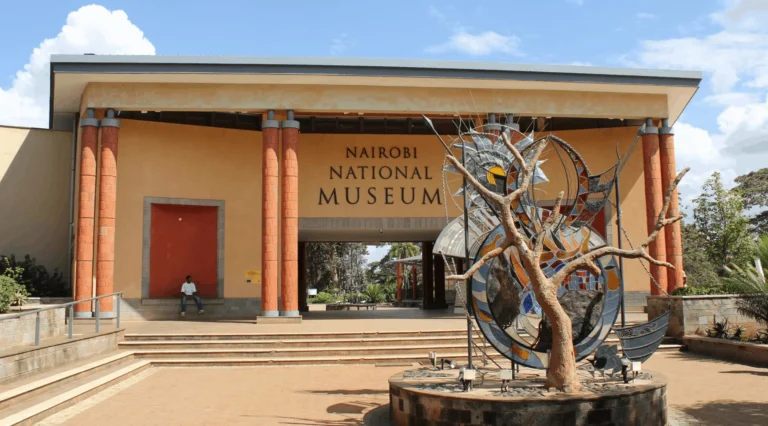
The Caribbean coast of Honduras, a Central American country, is not only bathed by the ocean currents and winds that come from the arm of the Atlantic known as the Caribbean Sea. The Honduran riverside is infused with a unique history told by the most peculiar inhabitants of the area: the Garifuna communities.
Their DNA shares traits of the indigenous people and Africans who settled in the area. The latter did so about 228 years ago. Studies on their origin indicate that the Garifuna are exponents of a racial and cultural identity that complements in their practices the customs of the ancestral peoples of Latin America, the Caribbean and Africa.
In this sense, they are characterized by a close relationship with nature and its laws, as well as a social system based on leadership and community exchange. On the other hand, the preservation of the Garifuna language, the rites and dances, are aspects that in 2008 UNESCO inscribed on the representative list of the Intangible Cultural Heritage of Humanity. This confirms the value of the Garifuna for Honduran and Central American culture.

A look at the Garifuna ethnohistory
Historical data indicate that the presence of communities of African origin in Honduras dates back to the early years of Spanish colonization of the continent. Unlike what happened in other countries, where Africans were taken to work as slaves on sugar cane or coffee plantations, those who arrived in Honduras were destined to serve in the homes of wealthy families and in the mines, mainly for gold extraction.
The Africans, who became fugitives after fleeing slave labor conditions, in most cases settled in indigenous communities. The mixture of indigenous people and fugitives from slavery gave rise to an ethnic group known as Miskitos, also characterized by the union between the indigenous people and the English who began to occupy the area.
Furthermore, historians establish the emergence of the Garifuna people at the end of the 18th century, specifically in 1797. To this end, they indicate that the current Garifuna living in Honduras are descendants of Africans who settled on the island of San Vicente after a shipwreck in 1635, when they were transported by boat to the mainland, and mixed with the Arawak and Kalinagu Amerindians.
These peoples were deported by the English in 1797 to the island of Roatan, located off the coast of Honduras, from where they settled along the Honduran coast and also occupied part of what is now Guatemala, Belize and Nicaragua.
The Garifuna Commonwealth of Honduras is currently made up of a group of municipalities that extend along the Atlantic coast, where the main Garifuna settlements remain. Although there are no conclusive statistics on the number of people belonging to these communities, a report by the non-governmental organization Cristosal estimates that there are between 98,000 and 300,000 Garifuna settled in the departments of Cortés, Gracias a Dios, Atlántida and Colón.

Relevant aspects of Garifuna culture today
According to research, the Garifuna communities are characterized by a dual root: the Carib Indians and the African peoples. This condition makes them bearers of linguistic, culinary, musical and dance traditions that combine the best of both cultures.
Despite the imposition of Spanish as the official language of Central American peoples, the Garifuna language in Honduras – of the Arawak linguistic family – continues to be preserved and transmitted from generation to generation through songs and oral poems that narrate myths and legends of the native peoples, as well as the teaching of this language in schools attended by Garifuna children.
Garifuna language conservation policies respond to the call made by the UNESCO, which warned that, within a century, non-dominant languages could disappear if governments do not establish guidelines to prevent it.
The Garifuna culinary culture is endowed with a rich heritage. The peculiar seal of Garifuna food is the coconut milk dressing. Typical dishes are based on a variety of fish and seafood accompanied by yuccas or plantains, as evidence of the harmony in the relationship between the sea and the land.

Dishes such as huduto, a fish broth with coconut milk and green plantain; budinga, made with fish soup and yucca, which is accompanied by plantain with coconut sauce; tapado, a stew of fish, seafood, coconut milk, aromatic herbs and green plantains; sere, a fish bathed in coconut sauce served with yucca and plantain, are some of the most prized culinary exponents of Garifuna cuisine.
From a musical point of view, Garifuna rhythms mix elements of indigenous and African native peoples. They use instruments such as drums, marimbas and maracas, and the songs provide guidance for the construction of canoes and mud houses, the best ways to fish and sow. The chants are accompanied by dances that are preferably performed outdoors, in complete balance with nature.
The Honduran Garifuna identity is also expressed in celebrations and festivals. In April, being the month in which the first Garifuna arrived to those lands, the Garifuna Ethnic Day is commemorated, which is celebrated every April 12th, and the Garifuna Spring Festival. In November, the International Garifuna Culture Festival (Ficagua), the Yurumein Festival and the Garifuna Culture Week are held. In all these events, the Garifuna people exhibits its contributions to Honduran society, positioning its historical and cultural legacy.
Current challenges of Honduran Garifuna communities
Although the Garifuna settled in Honduras two and a half centuries ago, their history has not been exempt from struggles for the recognition and vindication of their rights, in a society that has been dominated by whites since the beginning of the conquest and colonization of Latin America and the Caribbean.
In 2023, the Government of Honduras declared the Garifuna Route of the homonymous Commonwealth as a national priority. In that sense, a decree was approved not only to promote tourism in the Garifuna territories, but to establish public policies aimed at preserving the culture of those communities.
Likewise, a call was made to respect the human rights of the Garifuna peoples, who have historically had to face violations related to discrimination, exclusion and social inequality, especially by companies with economic and commercial interests in their ancestral lands, which have displaced many of the Garifuna settlements.
In that sense, many Garifuna communities that have been forcibly dispossessed of their territories, once they have tried to recover them, have been victims of persecution and violence. These issues have been denounced before international human rights organizations to vindicate the rights of the Garifuna over their ancestral lands; but even Honduran society and the Government must work much more in that direction.









